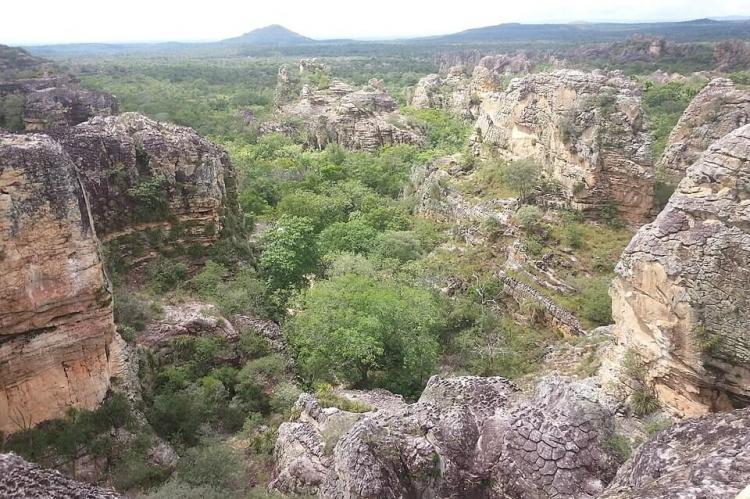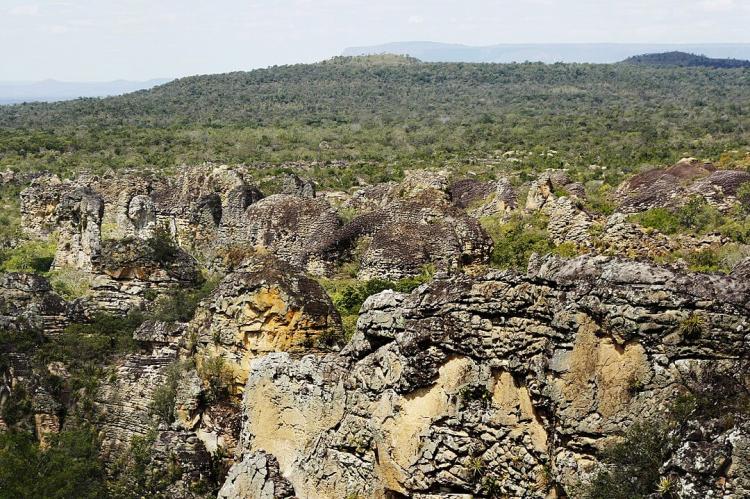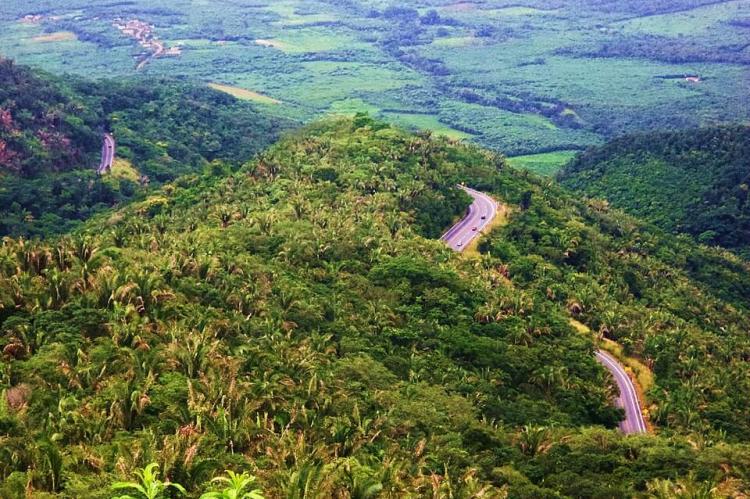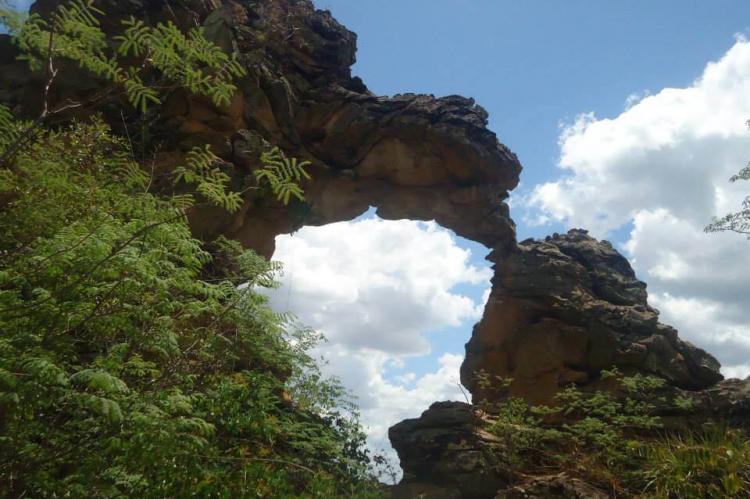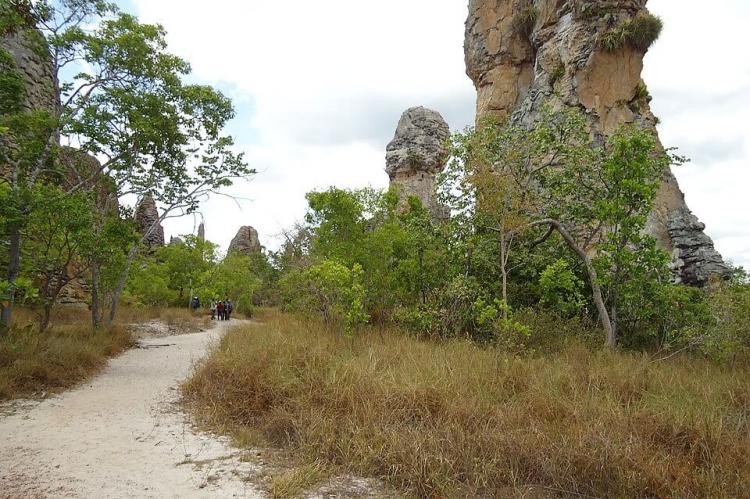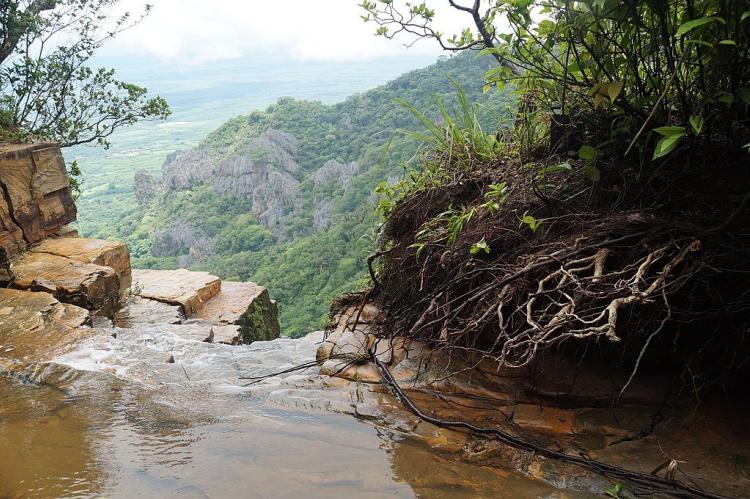Sete Cidades National Park: Serra da Ibiapaba Environmental Protection Area (Brazil)
Sete Cidades National Park is located in the Northeast Region of Brazil and contains an important geological formation. The park is surrounded by the Serra da Ibiapaba Environmental Protection Area (APA), which protects and conserves Cerrado, Caatinga, and Atlantic Forest remnants.
Sete Cidades National Park
Sete Cidades National Park is situated in the state of Piauí within the northeastern region of Brazil. It encompasses an area of approximately 7,700 hectares (19,000 acres), a hotspot for biodiversity, boasting a diverse array of flora and fauna endemic to the Brazilian Cerrado biome.
The park is primarily known for its unique geological formations, specifically the Sete Cidades (Seven Cities) rock formations. These bizarre rock formations, sculpted by millions of years of erosion, are said to resemble seven cities, hence the park's name. These stunning landscapes hold great interest for geologists and visitors alike. The rocks, adorned with lichens and moss, create an otherworldly atmosphere, especially during sunrise and sunset when the play of light accentuates their unique features.
The vegetation in Sete Cidades National Park varies depending on the altitude, ranging from dry forests on the lower slopes to mesophilic forests and humid campos de altitude at higher elevations. This diversity provides a habitat for various animal species, including mammals, birds, reptiles, and amphibians.
Visitors to the park can engage in a variety of activities, including hiking, birdwatching, and exploring the natural caves that punctuate the landscape. Conservation efforts are paramount, with ongoing initiatives aimed at preserving the park's delicate ecosystems and raising awareness about the importance of biodiversity. Like many natural areas, the Sete Cidades National Park faces challenges such as deforestation, illegal hunting, and unsustainable tourism practices.
Serra da Ibiapaba Environmental Protection Area
Situated in the states of Piauí and Ceará, the Serra da Ibiapaba Environmental Protection Area (APA)* complements the natural wonders of Sete Cidades National Park. With a total area of 1,592,550 ha (3,935,300 acres), it creates a network of protected areas dedicated to the conservation of Brazil's unique ecosystems.
The Serra da Ibiapaba, a mountain range spanning approximately 500 kilometers (310 miles), dominates the landscape of this environmental protection area. It encompasses diverse habitats, including dense forests, savannas, and crystalline water sources, fostering a wide range of plant and animal life.
The Serra da Ibiapaba Environmental Protection Area (APA) protects a remarkable diversity of ecosystems, including:
-
Cerrado: This savanna-like ecosystem dominates the western and southern portions of the APA. It is characterized by a mosaic of grasslands, woodlands, and gallery forests and is home to a wide variety of plant and animal species, including armadillos, anteaters, and giant anteaters.
-
Caatinga: Located in the eastern and northeastern parts of the APA, the Caatinga is a dry, thorny shrubland adapted to the region's arid climate. This ecosystem supports a wide range of drought-resistant plants and animals, such as cacti, bromeliads, reptiles, and small mammals.
-
Atlantic Forest: Remnants of the Atlantic Forest, a once vast rainforest, can be found in the higher elevations and valleys of the APA. A high diversity of tree species characterizes these forests and provides habitat for numerous animals, including monkeys, birds, and amphibians.
-
Seasonal Forests: Transitioning between the Cerrado and Caatinga ecosystems, seasonal forests exhibit both closed-canopy and open-canopy characteristics. They support diverse plant and animal life, including flowering trees, lianas, and various bird species.
-
Open Grasslands: Scattered throughout the APA are areas of open grasslands dominated by grasses and herbs. These grasslands provide habitat for grazing animals and are important for maintaining the ecological balance of the region.
-
Transitional Forests: Located between the Atlantic Forest and the Caatinga, transitional forests exhibit characteristics of both ecosystems. They are characterized by a mixture of tree species and provide valuable habitat for a variety of plants and animals.
-
Floodplain Forests: Along the banks of the rivers and streams within the APA, floodplain forests can be found. These forests are periodically inundated by floodwaters, which play an important role in enriching the soil and supporting a unique ecosystem.
-
Aquatic Ecosystems: The APA also protects a variety of aquatic ecosystems, including rivers, streams, and ponds. These ecosystems provide habitat for fish, amphibians, reptiles, and aquatic birds.
This environmental protection area is celebrated for its rich biodiversity, hosting species endemic to the region. Rare and endangered flora and fauna find refuge in the varied ecosystems, contributing to Brazil's overall biological wealth. Serra da Ibiapaba is home to the endangered red-handed howler (Alouatta belzebul) and the frog Adelophryne baturitensis.
Beyond its ecological importance, the Serra da Ibiapaba has cultural and historical significance. Indigenous communities have long inhabited these lands, leaving behind traces of their heritage. The protection area encapsulates the harmonious coexistence of nature and human history.
Preserving the Serra da Ibiapaba presents challenges, including deforestation and habitat fragmentation. Conservation initiatives focus on sustainable development, community engagement, and the enforcement of environmental regulations to ensure the longevity of this vital area.
The goal of the protection area is to promote ecotourism and handicrafts, as well as sustainable activities such as agroforestry, agroecology and beekeeping, replacing large and medium-sized animals and poultry.
*Note: APA stands for Área de Proteção Ambiental, which translates to Environmental Protection Area in English
